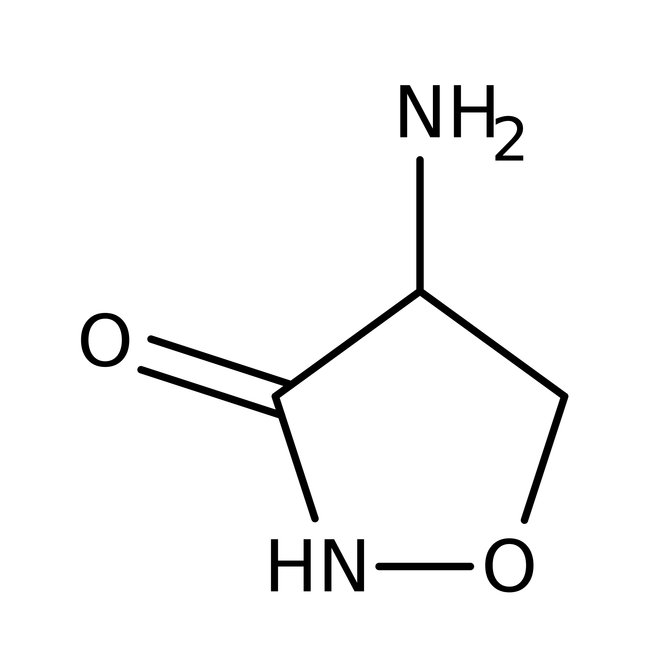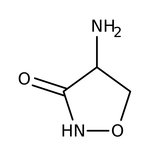Search Thermo Fisher Scientific
Thermo Scientific Chemicals
D-Cycloserine, 98+%
D-cycloserine, CAS # 68-41-7, is an amino acid analog of the amino acid D-alanine with broad-spectrum antibiotic activity. | CAS: 68-41-7 | C3H6N2O2 | 102.093 g/mol
| Catalog Number | Quantity |
|---|---|
| ALFA18000.03 | 1 g |
Catalog number ALFA18000.03
View Price:Sign InSign in to see your account pricing. Need an account? Register with us today.
Quantity:
1 g
Specifications
Chemical Name or MaterialD-Cycloserine
Melting Point137°C (decomposition)
CAS68-41-7
Recommended StorageKeep cold
RTECS NumberNY2975000
View more
Cycloserine is an amino acid analog antibiotic used for the treatment of tuberculosis and rarely used for the treatment of noninfectious diseases. It acts as a competitive inhibitor of D-alanine during peptidoglycan synthesis. It inhibits bacterial cell wall biosynthesis and prevents the conversion of D-Alanine to L-Alanine.
This Thermo Scientific Chemicals brand product was originally part of the Alfa Aesar product portfolio. Some documentation and label information may refer to the legacy brand. The original Alfa Aesar product / item code or SKU reference has not changed as a part of the brand transition to Thermo Scientific Chemicals.
General Description
- D-cycloserine is an analog of the amino acid D-alanine produced by Streptomyces garyphalus or S. orchidaceus and shows antibacterial activity
- The activity of this compound is related to the ability to interfere with bacterial cell wall synthesis by competitively inhibiting two enzymes, L-alanine racemase (responsible for the formation of D-alanine from L-alanine) and D-alanine ligase (the enzyme responsible for the incorporation of D-alanine into the pentapeptide required for peptidoglycan formation and bacterial cell wall synthesis). This interaction impairs the peptidoglycan formation, which is needed for bacterial cell wall synthesis
Application
- Depending on the concentration and the organism’s susceptibility, this compound may present bactericidal or bacteriostatic activities
- Despite its antibiotic activity, this compound also has an excitatory activity
- It has been described that D-cycloserine can bind to the glycine binding site of the NMDA receptor in the central nervous system
- This compound presents an inhibitory activity against GABA transaminase
RUO – Research Use Only
General References:
- Philbert, J.; Beeske, S.; Belzung, C.; Griebel, G. The CRF1 receptor antagonist SSR125543 prevents stress-induced long-lasting sleep disturbances in a mouse model of PTSD: Comparison with paroxetine and d-cycloserine. Behav Brain Res 2015, 279, 41-46.
- Hofmann, S. G.; Carpenter, J. K.; Otto, M. W.; Rosenfield, D.; Smits, J. A. J.; Pollack, M. H. Dose timing of d-cycloserine to augment cognitive behavioral therapy for social anxiety: Study design and rationale. Contemp. Clin. Trials 2015, 43, 223-230.



